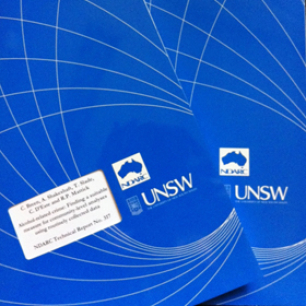NDARC Monograph No. 57 (2005)
In 2003, the National Drug Law Enforcement Research Fund (NDLERF) funded a two year, national trial of the feasibility of monitoring emerging trends in the markets for ecstasy and other ecstasy and related drugs across Australia. The project uses a methodology that has been used previously to monitor ecstasy and related drug markets in NSW, QLD and SA (Breen, Topp et al. 2002; Topp, Breen et al. 2004) which was based on the methodology used for Illicit Drug Reporting System (IDRS). The IDRS monitors Australias illicit drug markets including heroin, cocaine, methamphetamine and cannabis but does not adequately capture ecstasy and related drug use and therefore a different population needed to be accessed to obtain information on ecstasy and related drug markets.
For the purposes of the study, the term ecstasy and related drug is considered to include drugs that are routinely used in the context of entertainment venues including nightclubs, dance parties, pubs and music festivals. Ecstasy and related drugs include ecstasy (MDMA, 3,4-methylenedioxymethamphetamine) methamphetamine, cocaine, LSD, ketamine, MDA (3,4-methylenedioxyamphetamine) and GHB (gamma-hydroxybutyrate).
This report provides a national summary of trends from the second year of the trial to monitor ecstasy and related drug markets across Australia. These trends have been extrapolated from the three data sources; interviews with current REUs, interviews with professionals who have contact with ecstasy users and the colation of indicator data. The data sources are triangulated in order to minimise the biases and weaknesses inherent to each, and ensure that only valid emerging trends are documented. Consistency between the methodology of the main IDRS and this study was maintained where possible, as the IDRS has demonstrated success as a monitoring system. Consequently, the focus is on the capital city in each state, as new trends in illicit drug markets are more likely to emerge in large cities rather than regional centres or rural areas. Detailed information from each state is presented in individual state reports and are available from NDARC. This report focuses on the 2004 data collection in all states.


